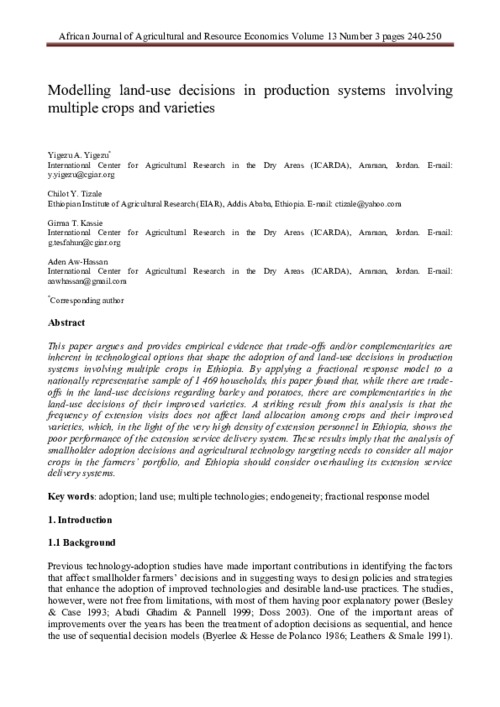Modelling land-use decisions in production systems involving multiple crops and varieties
This paper argues and provides empirical evidence that trade-offs and/or complementarities are
inherent in technological options that shape the adoption of and land-use decisions in production
systems involving multiple crops in Ethiopia. By applying a fractional response model to a
nationally representative sample of 1 469 households, this paper found that, while there are tradeoffs
in the land-use decisions regarding barley and potatoes, there are complementarities in the



